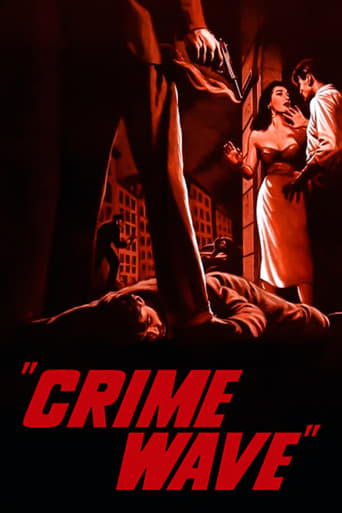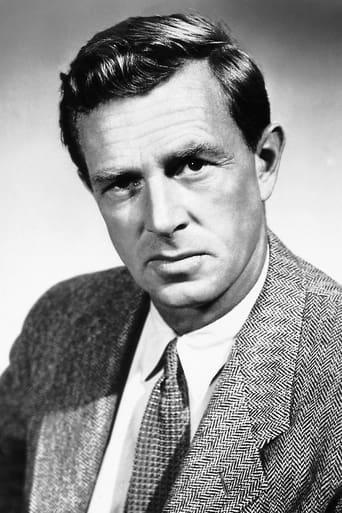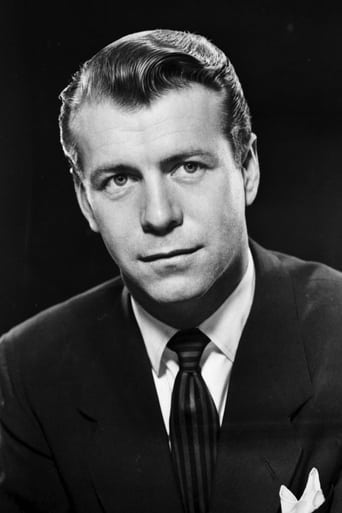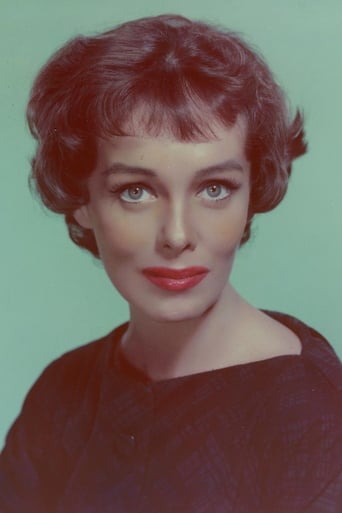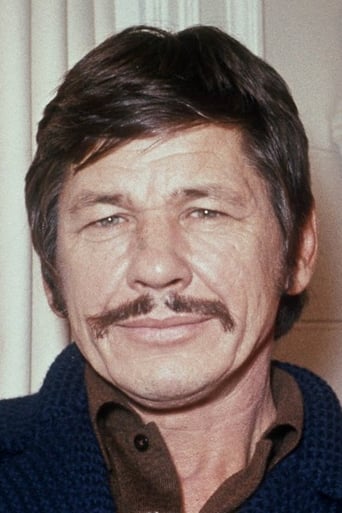Lovesusti
The Worst Film Ever
Softwing
Most undeservingly overhyped movie of all time??
Matylda Swan
It is a whirlwind of delight --- attractive actors, stunning couture, spectacular sets and outrageous parties.
Scotty Burke
It is interesting even when nothing much happens, which is for most of its 3-hour running time. Read full review
sol-
Visited by a wounded former cellmate in the middle of the night, a reformed criminal finds himself pestered by both the police and his other ex-con associates after the wounded man dies in his apartment in this downbeat crime drama. Simple as this set-up might sound, it actually pivots around a rather complex dynamic as the protagonist, played by Gene Nelson, finds in himself truly in a bind as neither the cynical detective investigating him, nor his former cellmates, believe that he has actually reformed, and nothing that he can say or do can convince either side that he has really gone straight. Nelson is not particularly effective in the lead role and Phyllis Kirk is given little to do as his trusting wife, but 'Crime Wave' benefits enormously from a talented supporting cast including a young Charles Bronson as one of the ex-cons and an uncredited Timothy Carey as a slightly unhinged associate. The film's best performance comes from Sterling Hayden though as the misanthropic and condescending fast-talking cop who believes that nobody is capable of change - a mantra that is interesting to consider in light of his attempts to quit smoking by chewing on toothpicks instead. Hayden also gets a very memorable final shot and he is the one key reason to see the movie. As far as film noir entries go, this is hardly the most exciting and well-paced offering out there. The movie has, however, a lot of interest as it tries to question whether or not a person is actually capable of changing when everyone else believes that it is an impossibility. Once a crook, always a crook?
Claudio Carvalho
The criminals "Doc" Penny (Ted de Corsia), Ben Hastings (Charles Bronson) and Gat Morgan (Ned Young) escape from San Quentin and kill a police officer while robbing a gas-station. However Morgan is shot and left behind by his partners. He seeks shelter with the former inmate Steve Lacey (Gene Nelson), who is paroled and starting a new life with his wife Ellen Lacey (Phyllis Kirk) and working as airplane mechanic. Lacey asks him to go away but Morgan tells that he has summoned the former Dr. Otto Hessler (Jay Novello) to treat him. When Hessler arrives, he realizes that Morgan is dead and flees from the apartment. Lacey calls his parole officer Daniel O'Keefe (James Bell) while the sleazy Detective Lieutenant Sims (Sterling Hayden) arrives at his home following his instincts. Lacey is arrested for three days but O'Keefe believes him and keeps his job. When Lacey returns home, "Doc" and Ben surprisingly arrive and threaten Ellen to force Lacey to participate in a bank heist. What will Steve Lacey do?"Crime Wave" is an excellent film-noir with the story of a man trying to start a new life and haunted by his former cellmates. The cinematography in black and white is impressive and very beautiful. The direction of André De Toth is perfect and Sterling Hayden has an amazing performance in the role of a tough homicide detective. Indeed all the cast has also great performance. The beauty of Phyllis Kirk is highlighted by her role and by the cinematography. My vote is nine. Title (Brazil): "Cidade Tenebrosa" ("Tenebrous City")
secondtake
Crime Wave (1954)What a surprise. There was a drift in the 1950s from highly controlled studio to highly controlled location shooting, and then, as we see here, to a slightly looser location style that used more of the ambient qualities. It isn't quite cinema verite (or some other documentary-influenced style more common in Europe), and it may be more a product of budget than aesthetics, but it really works. It's most of all realistic.Director Andre De Toth handles all the moving elements with fast precision. The photography is, by necessity, smart and crisp, but the lighting is less dramatic (less noir, you might say) than most crime films. But again, this is a indication of where the industry was moving, on on De Toth's intentions to avoid over stylizing. Other mid 1950s crime films also show shifts from the dramatics of the noirs that define the genre, one example being another Sterling Hayden, "The Killing," directed by Kubrick two years later. The use of identifiable locations for the shoots is part of their unique draw. In Crime Wave, the L.A. streets are used in a simple, unhyped way.The story is a meat and potatoes police drama, with Hayden working the homicide squad. He's terse and experienced, and has the thugs in his sights almost from the start. This puts a lot of the focus on the bad guys, and they come off as highly believable. They do crimes to survive, without romanticizing the criminal, and with lots of little mistakes and harping back and forth. And they know they are on the run, dragging a couple of innocent people along for the terrifying ride.
MisterWhiplash
Crime Wave has the makings for something quite simple as a movie. Its story is about cops and criminals and a few ordinary folks trying to get by. A few criminals (the main ones played by Ted de Corsia and a young Charles Bronson) are out of San Quentin and shoot a gas station attendant and cop. On the lam they hold up with also ex-con Steve Lacey (decent leading man Gene Nelson) with his wife, but what they don't know is that he's already been tapped by the cops, specifically Sterling Hayden's Detective Sims, who is so hard-nosed he could cut through bricks with just a stare and some tough words. It all leads up to one of those heists that just can't go right for the bad guys, but what about the good couple caught in the middle? It is fairly straightforward, and it could have been in other hands. But there's something about Andre De Toth, as director, that stands Crime Wave out as a piece of lean noir cuisine. The way it's shot is one thing, as his European influence comes through in a lot of the exteriors and his way of utilizing natural lighting and real locations, or just how he has someone like a room that looks too real like Sims' office. His camera has a distinct tone to it even when sets or usual shots in moving cars have to be done, and it cuts through the BS and keeps one riveted even as one knows what's going to happen (the last couple of minutes with Sims and the Lacey's are one of them).It also can't be stressed how awesome an actor Sterling Hayden is. In everything he just brings that "umph" that is required whether it's to a hoodlum or a psychotic or a corrupt cop, and in Crime Wave his authority as a presence (six foot five inches) and his pattern of speech play off well against the rest of the usual character actors, save maybe for Charles Bronson since he too is unique even at a young age and creepy character actor Timothy Carey as the man put on watch of Mrs. Lacey. Overall, Crime Wave is a procedural that snaps and crackles and pops for 72 minutes and allows fans of classic film noir to soak up the atmosphere and have a good time seeing the coppers close in on the crooks who, as almost always is the case, don't stand a chance.
